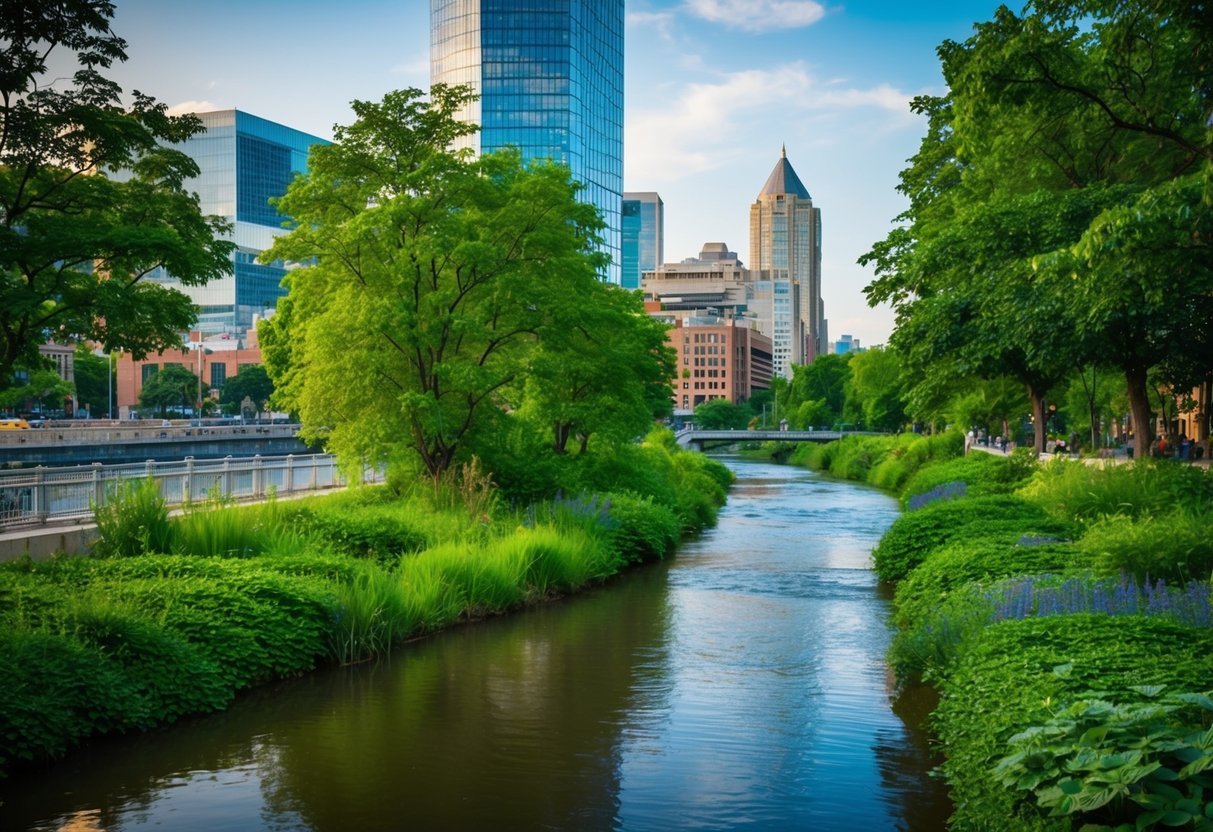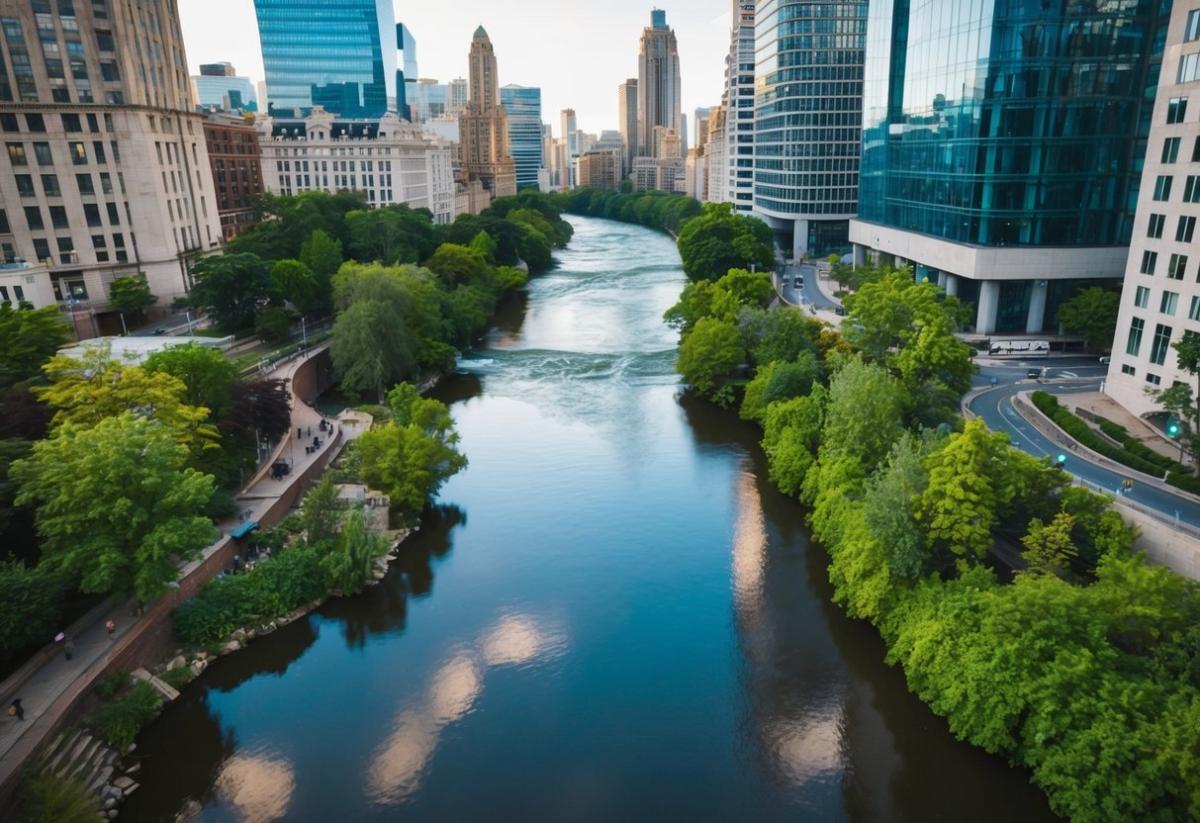Rivers bring life to cities in ways you might not expect. Urban rivers reduce flood risks and create spaces where both nature and people can thrive.
When you walk along a river in your city, you’re experiencing more than just flowing water – you’re witnessing a vital ecosystem at work.
Healthy urban rivers create stronger city ecosystems by supporting local wildlife, improving water quality, and making cities more resilient to climate change.
Think of city rivers as nature’s air conditioners and water filters rolled into one amazing package.
Green spaces along riverbanks turn concrete jungles into vibrant community hubs.
These areas give you places to relax, exercise, and connect with nature without leaving your neighborhood. Plus, the plants and trees help clean the air you breathe and create homes for local wildlife.
Key Takeaways
- Urban rivers act as natural climate control systems while supporting diverse wildlife
- Restored riverbanks create new community spaces and boost local business growth
- Healthy river ecosystems protect cities from floods and improve water quality
Revitalizing Urban Rivers for Resilient Ecosystems
Bringing life back to urban rivers creates thriving spaces where nature and cities work together.
These waterways can transform from neglected channels into vibrant ecosystems that benefit both wildlife and city dwellers.
The Role of Urban Rivers in Local Ecosystems
Urban rivers are the lifeblood of city environments. They provide essential ecosystem services like flood control and aquifer recharge.
Your local river does more than you might think! It creates corridors for wildlife movement and supports dozens of plant and animal species.
Green infrastructure along riverbanks, like wetlands and native plants, helps filter pollutants and provides homes for urban wildlife.
Think of it as nature’s water treatment system!
Balancing Urban Development with Ecosystem Health
You can help find the sweet spot between city growth and river health. Smart urban river restoration looks for ways cities and rivers can thrive together.
Creating riverside parks and green spaces gives you places to connect with nature while protecting the ecosystem. It’s a win-win!
Key elements for success:
- Buffer zones between buildings and riverbanks
- Native plant gardens along waterways
- Public access points that don’t harm habitats
Challenges in Water Quality and Management
Urban runoff is your river’s biggest enemy. Rain washes oils, trash, and chemicals from streets straight into waterways.
Natural flood management helps protect both you and the ecosystem. Simple solutions like rain gardens and permeable pavements can make a big difference.
Want to help? Join local river cleanup events or start a storm drain marking program in your neighborhood. Every small action adds up to cleaner, healthier urban rivers!
Common water quality challenges:
- Stormwater pollution
- Erosion from construction
- Litter accumulation
- Chemical contamination
Harnessing Nature for Urban Revival

Cities around the world are embracing natural solutions to bring life back to their waterways. Urban river restoration projects create vibrant spaces that benefit both people and wildlife.
Integrating Green Spaces and Green Infrastructure
You’ll find amazing transformations when cities blend natural elements with urban planning. Green spaces along riverbanks act like giant sponges, soaking up excess rainwater and reducing flood risks.
Want to see nature at work? Look for rain gardens and bioswales that filter pollutants before they reach the river.
These clever features make your city more resilient while looking beautiful.
Natural infrastructure costs less than traditional concrete solutions. Plus, you get the bonus of creating peaceful spots where you can escape the urban buzz.
Promoting Biodiversity and Climate Resilience
Your local river corridor can become a superhighway for wildlife. Cities are rediscovering water as a tool for ecological regeneration, creating habitats that support diverse species.
Native plants along riverbanks attract birds, butterflies, and beneficial insects. These green corridors help species adapt to climate change by providing safe passage through urban areas.
Trees and wetlands along rivers act as natural carbon sinks. They clean the air you breathe while keeping the city cooler during heat waves.
Community-Led Initiatives and Nature-Based Solutions
You can play a key role in river restoration! Community groups are leading the charge in bringing rivers back to life. They do this through volunteer clean-ups and monitoring programs.
Local knowledge helps identify the best spots for reconnecting people with their natural environment. Your involvement makes projects more successful and creates a sense of ownership.
Consider joining a “river guardian” program or helping to plant native species. These activities aren’t just good for nature – they’re also fun ways to meet your neighbors and learn about local ecosystems.

